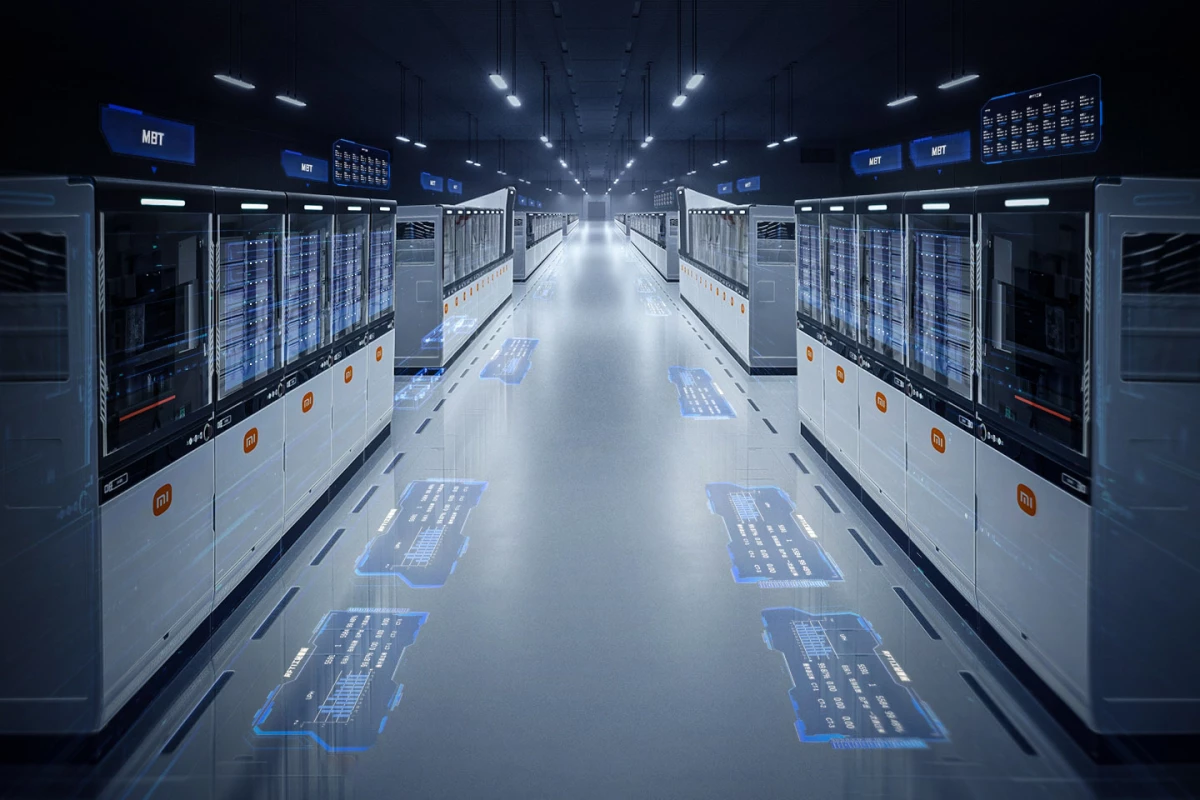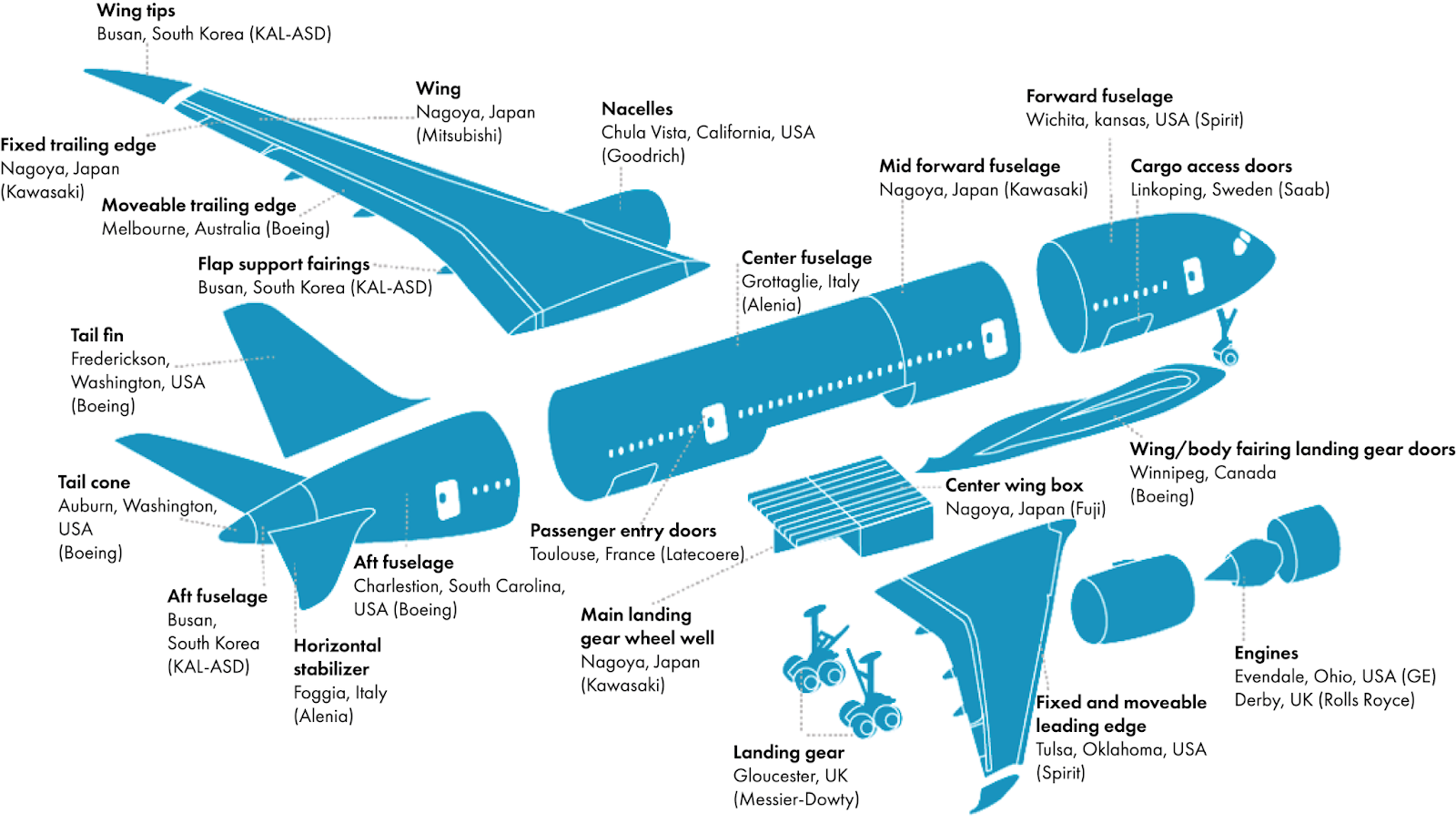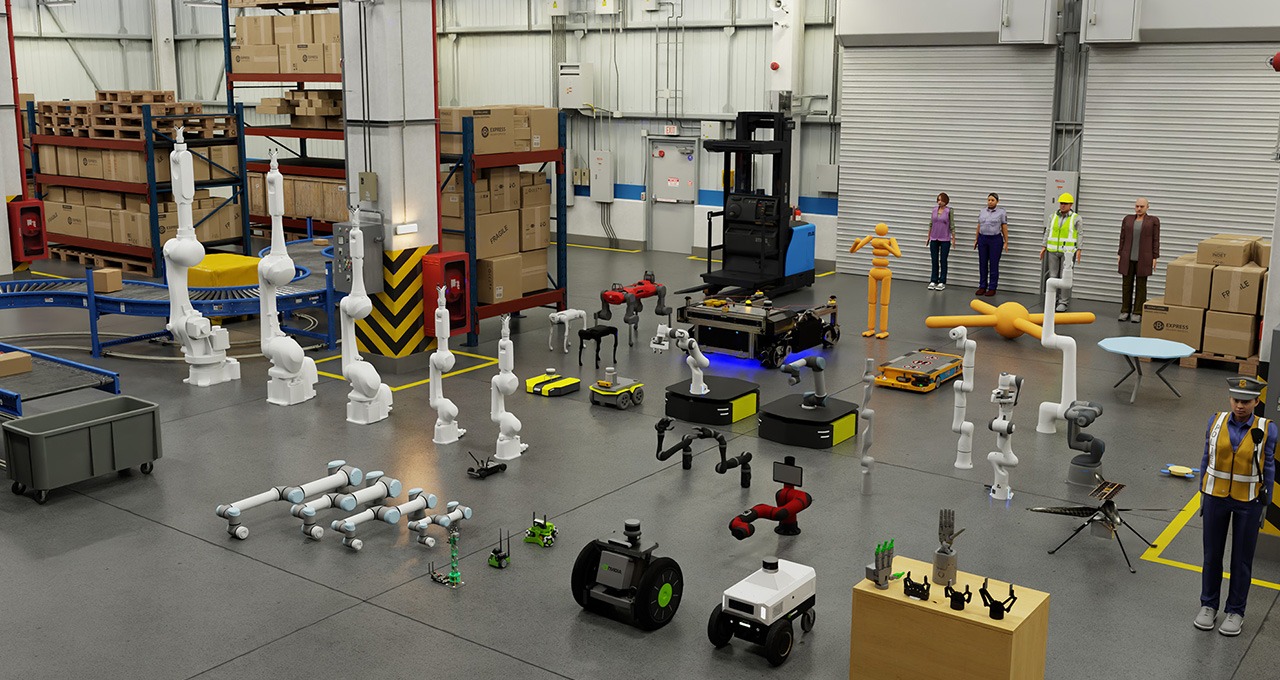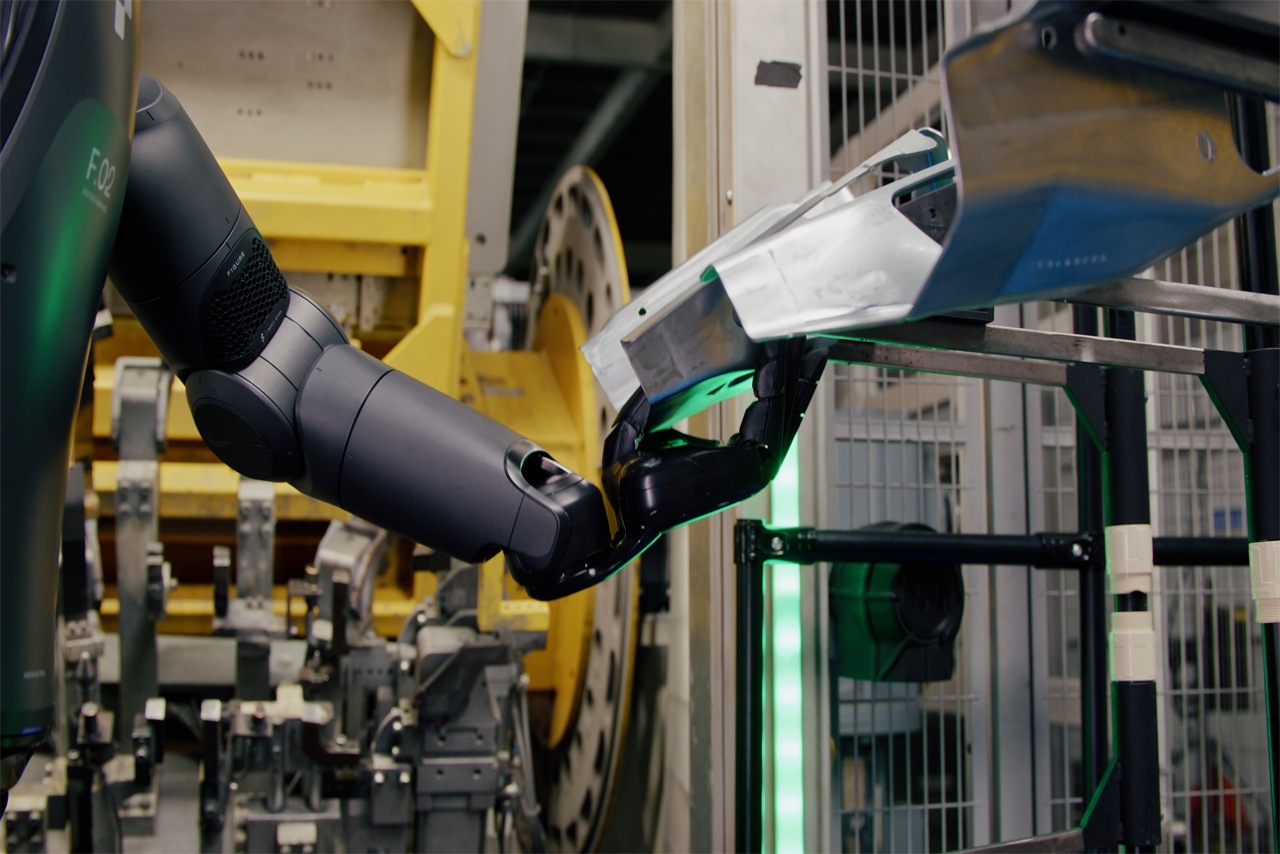3 Robotics Shifts Reshaping Future of Manufacturing
The future of manufacturing depends on three AI robotics trends: simulation training that accelerates development, humanoid robots on factory floors, and autonomous systems that learn from operational data.
As AI-powered robotics reshape factory floors worldwide, three trends are determining which nations—and companies—will dominate production in the decades ahead.
Companies like Xiaomi and Tesla are achieving unprecedented rates of automated assembly, setting the pace for global competition.
Auto manufacturers like Mercedes-Benz and BMW are deploying humanoid robots in actual production environments.
Inside Xiaomi's Changping facility in northeast Beijing, the lights stay off by design.
Across 81,000 square meters—roughly the size of eleven soccer fields—production runs in complete darkness. Lights are unnecessary because no human workers occupy the factory floor. This is the future of manufacturing: a facility where artificial intelligence doesn't just assist operations, it commands them entirely.
The facility cost $330 million to build and houses eleven production lines capable of producing one flagship smartphone every three seconds, 24 hours a day, 365 days a year. The factory's brain—Xiaomi's proprietary HyperIMP (Hyper Intelligent Manufacturing Platform)—orchestrates every motion, diagnoses equipment problems before they cascade into failures, and continuously optimizes production flows without human intervention. The system possesses what Xiaomi describes as "self-perception, self-decision-making, and self-execution capabilities.”Ten million phones flow out of this facility annually.
Darkness in this context represents a fundamental restructuring of manufacturing's relationship with human labor. And this achievement isn’t limited to Changping. Tesla's Shanghai Gigafactory has achieved 95 percent robotic assembly, compressing production time per vehicle from more than 10 hours to just 2.5 hours. The pace for the future of manufacturing has been set. Now it’s a matter of who can keep up.

Global Robotics in Manufacturing Struggles Behind China
The question feels especially pertinent to the U.S. at the moment.
China has served as the world's manufacturer for decades, building a massive industrial footprint that now provides the perfect testing ground for robotic automation. Chinese manufacturers possess both the infrastructure and the operational data to train increasingly sophisticated AI systems.
Why is the U.S. lagging?

U.S. companies face five significant challenges to adopting robotics in manufacturing— challenges further compounded by the robotics trends we’ll explore in this piece.
- Fragmented production:. The Boeing Dreamliner serves as a cautionary tale—parts sourced globally from more than fifty suppliers created assembly nightmares that plagued the program for years.
- "Innovation dilemmas:" As described by Clay Christensen, large companies often focus on incremental improvements to existing products, missing disruptive technologies that eventually mature and overtake the mainstream market.
- Legacy Systems: U.S. companies operate with systems and facilities designed for human workers. Converting these environments to accommodate AI-driven robotics demands wholesale reimagining of production flows, worker roles, and operational management.
- Robot density: This is the number of industrial robots per 10,000 manufacturing workers. In 2017, China had less than half the robot density of the United States, but it overtook the U.S. by 2021 and now has a 38% advantage. More robots mean more operational data, enabling better AI training, which results in improved AI systems that attract more automation investment.
- Regulatory friction: American ports remain among the world's slowest and least automated facilities, primarily due to dockworker union resistance to automation technologies. Compare this to Rotterdam, which moves more than 13 million twenty-foot containers annually with fewer than 1,500 total port employees—while New York and New Jersey employ more than 3,700 longshoremen to handle approximately 9 million containers.
The United States isn't alone in this struggle. The United Kingdom has the lowest robotics adoption among G7 nations, and Canada ranks 15th globally, with robot density growing at half the rate of the United States between 2016 and 2019. When controlling for wage levels, France sits 61% below expected adoption rates, the UK 68%, and Canada 44%. The barriers are throughlines: legacy infrastructure, regulatory caution, and insufficient national strategies to accelerate adoption.
This interplay of robotics, AI, geopolitics, and regulatory policy is defining the future of manufacturing for the U.S. and the rest of the world. While Western manufacturers grapple with the challenges described above, three technological trends in robotics are ensuring that hesitation carries an exponentially growing cost. The impact of these technologies will compound over time, determining on a global scale who dominates manufacturing in the decades ahead.
#1 Training Robots in Virtual Worlds
Traditionally, robot development required years of physical testing. Engineers programmed robots for specific tasks, deployed them in controlled environments, and spent months tweaking performance through trial and error. Each modification meant stopping production, reprogramming, and starting over.
But physical AI has fundamentally changed this timeline. NVIDIA's Isaac Sim platform enables robots to learn in simulated environments that obey the laws of physics before ever touching a factory floor. The future of manufacturing increasingly depends on these virtual training grounds where robots can run through millions of scenarios that would take years to replicate in physical spaces.
Over 100 companies now use Isaac Sim for robot development, including major manufacturers like Siemens, Universal Robots, and Cohesive Robotics. The platform creates physically accurate virtual environments where robots can be trained through countless iterations without the costs and time constraints of real-world testing. Cohesive Robotics, for instance, uses Isaac Sim to train robotic arms for high-mix manufacturing, testing finishing processes virtually before deployment in actual production environments.

Countries and companies with the best simulation infrastructure can iterate at speeds impossible for competitors relying on physical testing alone. This creates a new strategic chokepoint: access to the GPU computing power required for robot training. While NVIDIA GPUs running on AWS cloud infrastructure dominate currently, China is building parallel capabilities with domestic alternatives, recognizing that whoever controls robot training infrastructure shapes the future of manufacturing.
#2 Humanoids on the Production Floor
For years, humanoid robots remained confined to research labs and promotional videos. The future of manufacturing seemed destined for traditional industrial robots—articulated arms bolted to factory floors, performing single repetitive tasks behind safety cages.
That's changing. Major automakers are now deploying humanoid robots in actual production environments.
BMW deployed Figure AI's Figure 02 humanoid robot at its Spartanburg, South Carolina, plant in a real production environment. The robot stands approximately 170 cm tall, weighs 70 kilograms, and has a 20-kilogram load capacity. During trials, it successfully picked up sheet metal parts with two hands. It placed them into precise fixtures for welding—a task requiring the kind of dexterity that traditional industrial robots struggle to replicate.

"With an early test operation, we are now determining possible applications for humanoid robots in production," said Milan Nedeljković, Board Member for Production with BMW AG. "We want to accompany this technology from development to industrialisation."
Mercedes-Benz has taken a similar approach, testing Apptronik's Apollo robots at its Kecskemét plant in Hungary. These humanoids stand 1.7 meters tall, weigh 72.5 kilograms, and can lift approximately 25 kilograms. The robots handle material delivery to production lines, perform component inspections, and manage kitting tasks that require dexterous movement to hold smaller items.
"We are exploring new possibilities with the use of robotics to support our skilled workforce in manufacturing," said Jörg Burzer, head of production, quality, and supply chain management at Mercedes-Benz Group. "This is a new frontier and we want to understand the potential both for robotics and automotive manufacturing to fill labour gaps in areas such as low skill, repetitive, and physically demanding work."
The humanoid form factor offers a practical advantage often overlooked in discussions about the future of manufacturing. These robots can work in spaces designed for humans without requiring expensive facility redesigns. Traditional industrial robots demand specialized environments, safety barriers, and dedicated workflows. Humanoids navigate existing factory layouts, use standard tools and equipment, and adapt to spaces where humans and machines work side by side.
"We want to understand the potential both for robotics and automotive manufacturing to fill labour gaps in areas such as low skill, repetitive, and physically demanding work."
—Jörg Burzer, Head of Production, Quality and Supply Chain Management, Mercedes-Benz Group
Early adopters in the automotive and logistics sectors are gaining operational experience while the technology remains relatively nascent. Meanwhile, Chinese automakers, including BYD and Geely, are investing heavily in humanoid development, creating another front in the global competition to define manufacturing's next generation. The gap between companies testing humanoids in pilot programs and those deploying them at scale will likely determine competitive positioning in the future of technology.
#3 AI Unlocks Autonomy in Industrial Robotics
Traditional industrial robots follow instructions. They execute predetermined sequences, moving from point A to point B along carefully programmed paths. When conditions change—a pallet positioned slightly differently, unexpected congestion in a warehouse aisle—these robots struggle or stop entirely, waiting for human intervention.
The future of manufacturing belongs to robots that think. According to NVIDIA CEO Jensen Huang, “Everything that moves will be autonomous someday.”
Amazon's deployed its one millionth robot in mid-2025, simultaneously launching DeepFleet, a generative AI foundation model that coordinates robot movements across over 300 facilities worldwide. This represents a fundamental shift from automation—doing preset tasks—to autonomy—making adaptive decisions in real time.

DeepFleet was trained on billions of hours of warehouse operational data. It functions as an intelligent traffic management system, continuously analyzing robot positions, inventory locations, order priorities, and workflow patterns. DeepFleet predicts congestion, identifies optimal routes, and dynamically adjusts.
"Think of DeepFleet as an intelligent traffic management system for a city filled with cars moving through congested streets," said Scott Dresser, vice president of Amazon Robotics. "Just as a smart traffic system could reduce wait times and create better routes for drivers, DeepFleet coordinates our robots' movements to optimize how they navigate our fulfillment centers."
Amazon reports that DeepFleet improves robot travel efficiency by 10 percent, continuously learns from operational data, and gets smarter with each interaction.
"Just as a smart traffic system could reduce wait times and create better routes for drivers, DeepFleet coordinates our robots' movements."
— Scott Dresser, Vice President of Amazon Robotics
The Future of Manufacturing Is within Reach
Dark factories are here.
Physical AI simulation enables rapid robot development, humanoids move from concept to production floors, and AI foundation models transform robots into adaptive decision-makers that learn from operational experience.
These three trends converge to create compounding advantages for early movers. The stakes extend beyond manufacturing efficiency. Control over AI-age production capabilities determines economic power in ways that echo historical transitions. When Japan revolutionized manufacturing with lean production methods in the 1970s and 1980s, Western automakers spent decades trying to catch up. Many never fully recovered their competitive positions. The current shift to AI-powered robotics represents a similar inflection point, but the timeline is compressed and the advantages compound faster.
Ten years from now, dark factories could be the global norm. Some countries are turning off the lights by choice, achieving unprecedented efficiency through AI-powered automation. Others watch them flicker out, casualties of regulatory caution and delayed adoption. The gap between simulation-trained, AI-coordinated robot fleets and traditional manufacturing is already measurable in production time, quality metrics, and operational costs.
The future of manufacturing is being written today in the decisions companies and countries make about deploying these technologies. The switch is within reach—but only for those willing to flip it.





.svg)






_0000_Layer-2.png)

